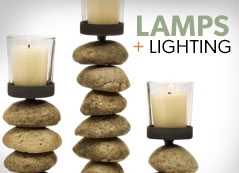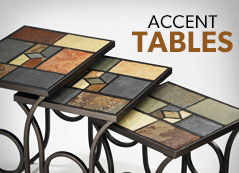
How to Buy Wood Furniture and Tips for Buying Wood Furniture
When I was in elementary school, my grandmother took me too an estate sale. There were lots of fabulous solid wood furniture pieces. I was enthralled by the desk's sturdy dovetailed drawers, the secret compartments hidden inside, and the supports that slid into place whenever you lowered the top. Quality wood furniture is an investment in memories as well as function. If you're in the market for a new table, desk or cabinet here's what you should know. Well first you must judge, how good is that desk, bookcase or entertainment center you're thinking of buying? How can you tell if the construction is sound, the drawers will work, the hardware is durable?
The first thing you are going to have to do is feel the weight of drawers and doors. High-quality furniture has a sense of weight, scale and solidity to it. Large cabinets, entertainment centers, sideboards should have leveling devices in the base. Keeping big items level is important because otherwise doors tend to stick. There should be metal latches under the table leaves and table top. When you buy wood furniture, drawers should work smoothly and should not bind when extended.
When you look at the drawer's interiors it should be smooth to the touch, sanded and sealed. The glass shelves should be at least 3/8 inches thick and have plate grooves. Better-end display and china cabinets should have halogen lighting and line switches. One thing to remember is that upper-end manufacturers use heavier, more substantial and more decorative hardware. One great thing to do is to inspect hinges to determine if they are solidly secure and can handle the load of the door. You should check to see if there are dust panels between drawers. They should be wood on the best items, cardboard or nonexistent on less expensive items. Dust panels keep dust and varmints from coming up under the piece and soiling the contents of the drawers, but they are not critical to the structural integrity of your furniture. The back panel of your furniture will be wood on the best items, cardboard or fiberboard on less expensive items. Check also to see if the back panel is inset into the case, instead of simply nailed on the back edges, because this technique contributes a lot to overall stability.
On the best items, drawer guides will be wood lubricated with wax or they will be metal. Center guides combining wood and metal, wood and plastic, or plastic and metal are not found on higher quality goods. Metal side-guide systems are found in combination with plastic or nylon bushings on some fine quality cabinet work. You want the piece to have a deep, clear finish, not necessarily a high gloss. The degree of sheen has nothing to do with the quality of the finish. Check to see if legs of chairs, tables or side pieces have metal glides on the base. They aid the consumer because bottoms of legs might be poorly finished and glides will keep them and any potential finish stains off hardwood and carpets. When you look at a dining table, put your hand on the corner and try to move it. If you get lots of wiggle, watch out! Either the legs are not properly secured or the leg assembly is poorly engineered.
Glass table tops should be made of tempered glass and should be between 1/2 and 5/8 inch thick. Glass inserts should be 3/8 inch thick on cocktail tables, etc. Look for liners in silverware drawers of china cabinets, buffets and sideboards. Ask what kind of table slide is used on extendable dining tables. Watertown extension slides are the best; that's especially important on tables that extend to 120 inches or longer. Entertainment centers should have electrical outlets, cable hookup, pullout TV swivel trays, "punch-out" back panels, VCR/DVR pullout trays, and pocket doors that slide back into the case for viewing.
Now it's time to buy your wood furniture. The first thing you're going to have to ask yourself is what is your budget? Though you may not stick to it, a budget for purchasing furniture is a good guideline when you begin shopping. If you appreciate quality construction, fine woods, and unique design you may be tempted to spend more for these features. And you may decide that your budget deserves to be readjusted if you fall in love with something special. But a budget can keep you in line so you don't spend all your available funds on one piece.
After that you will have to ask yourself, where will it be used? Does the size and scale of a piece fit into your space? Big armoires are prized for storage, yet still must fit into the physical and visual space in the room. If your home is large then you'll usually want to avoid tiny pieces of furniture.
What style do you like? If you've already found your favorite style of furniture - congratulations! Yet, more and more decorators and homeowners are using an eclectic style - meaning mixing a number of styles - within a room. Pieces of different styles in one room can appear more "collected", adding interest to the space.
What kind of wood do you like? All wood furniture is made from either hardwood which come from trees that lose their leaves seasonally or softwood which comes from trees that keep their leaves year round. Oak and teak are hardwoods that really are hard and heavy. Fine hardwoods like walnut, mahogany, maple, cherry, or oak are found in the most expensive pieces. Softwoods like are used in less formal pieces.
What kind of finish is on the wood? The finish on furniture can enhance the natural look of wood or change it completely. A finish of oil or wax lets the wood shine. For more durability, lacquer or varnish is applied when the piece is manufactured. Distressed furniture can be natural as with an old piece or manmade via sanding or beating the wood with chains. Painting, gilding, and inlays can change the look of a wood piece as well. The finish of case goods should be smooth to the touch and any table leaves should match.
Do the components work properly? Drawers should be smoothly finished, fit well, and slide easily, stopping flush. They should have interior dust panels to keep contents clean. Doors on cabinets should open and close easily with hardware that is of high quality, installed securely. Interior lights should be easy to access. If the piece is to be used as an entertainment center or computer station, holes should be drilled for electrical cords. Be sure that the legs of a table are even and that the table does not "rock."
When I was in elementary school, my grandmother took me too an estate sale. There were lots of fabulous solid wood furniture pieces. I was enthralled by the desk. Quality wood furniture is an investment in memories as well as function. So if you're in the market for a new table, desk or cabinet follow this advice in this article for good tips to help you buy the perfect wood furniture piece for you! Good luck.




























